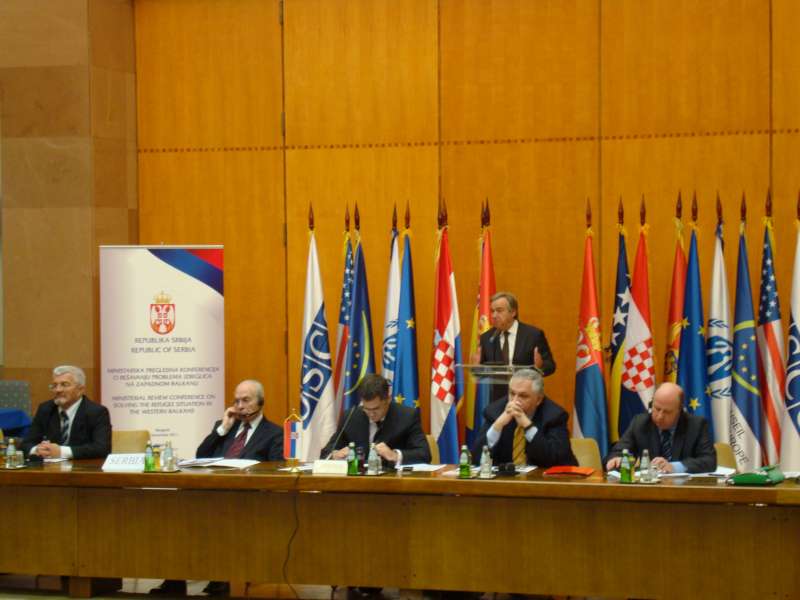- Text size
 |
|  |
|  |
| 
- Français
UNHCR welcomes latest regional effort to end refugee displacement in Balkans
News Stories, 8 November 2011
BELGRADE, Serbia, November 8 (UNHCR) – Bosnia and Herzegovina, Croatia, Montenegro and Serbia have pledged to step up efforts to resolve Europe's most protracted refugee situation and end the suffering of 74,000 uprooted civilians.
In a joint declaration signed in Belgrade on Monday, the foreign ministers of the four countries gave their firm support to a work plan that sets out concrete steps for removing the remaining obstacles to a durable solution for the remaining refugees from the conflict of 1991-1995 in south-east Europe. These include the accelerated provision of civil documentation allowing refugees and returnees to enjoy their rights and resume normal lives.
Donors will be asked at a meeting in early 2012 to support the Regional Programme and its goal over the next five years of finding solutions for people currently living in collective centres and other vulnerable refugee, including former tenancy rights holders.
UN High Commissioner for Refugees António Guterres welcomed this latest regional effort to end the protracted refugee situation. "This represents enormous courage and wisdom from the four governments," Guterres said in an address to the ministerial gathering in the Serbian capital. "The solutions always require a political initiative to make them possible and economic and social development measures to make them sustainable," he stressed.
Monday's declaration of support for the programme is a result of intense efforts by the four countries and presents a firm commitment to cooperate at the regional and national level in dealing with the problem. Regional cooperation between Bosnia and Herzegovina, Montenegro, Croatia and Serbia is setting an example where political will and fruitful regional collaboration enabled resolution of a protracted displacement.
Finding a solution to the protracted displacement problem in the western Balkans is a priority for UNHCR, which led a major relief operation in the area during the violent break-up of the former Yugoslavia in the 1990s.
With more than 2 million people uprooted within and beyond the region, it was Europe's largest refugee crisis since World War II. A majority of the refugees have returned home over the past 16 years, or have integrated locally.
European Union Enlargement Commissioner Stefan Füle, meanwhile, said refugees and displaced people constituted the most vulnerable part of the population. "Meeting their needs is a key step toward reconciliation between countries in the region," he told the Belgrade gathering.
UNHCR will remain engaged and committed to supporting the governments of the four countries in closing the refugee displacement chapter in the region. The refugee agency is also working with the national authorities to ensure development of asylum systems and practices in line with international and EU standards and the prevention of statelessness.
















































